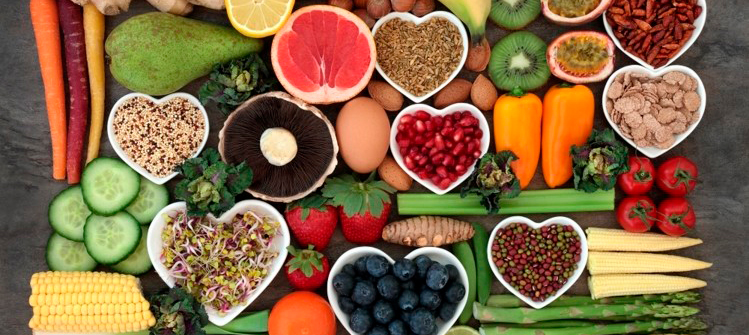What will be the core areas of nutritional interest in 2030? How can R&D teams, producers and brand marketers utilize these trends to engage with consumers?
Speaking to NutraIngredients-LATAM, Jenny Zegler, Associate Director of market research provider, Mintel Food and Drink, provides key insights on what we can expect to see over the next ten years in the nutrition sphere.
1. How big a part does attaining good nutrition through healthy nutritious diets play in the next 10 years?
Health will continue to be a priority for consumers through 2030. In the next ten years, Mintel predicts that consumers will combine their personal motivations for healthy living with the potential for a healthy diet that also could improve the health of the planet.
The priority of sustainable or environmentally responsible diets will be to get natural nutrition from plants including fruits, vegetables, whole grains and seeds.
In addition, there is potential for technological evolutions in the next ten years that allow consumers to gain more knowledge about their personal data and genetic makeup and use those insights to customize their diets. This could provide consumers with custom insights into what nutrients they might need and which ingredients as well as how often they need to consume them.
2. How significant are nutritious ingredients in contributing to the ‘Change, Incorporated’ trend by helping to improve the health of the planet and the population?
Mintel’s 2030 global food and drink trend, ‘Change, Incorporated’, forecasts that more companies will need to make corporate social responsibility (CSR) central to their business models to meet the demands of consumers who are hungry for change.
It will be essential that companies be authentic in their CSR commitments and ensure their promises align with their brand portfolios and corporate morals.
Authenticity is key because skeptical consumers will be quick to call out any efforts that are perceived as self-serving rather than designed to contribute to the greater good.
The causes consumers are looking for action on include not only environmental responsibility, ethical promises in the supply chain but also public health. With that in mind, a potential CSR effort for some global food and drink companies would be to improve the nutrition of their products.
Nutrition-related commitments could improve existing products, launch new products with specific nutrition goals, or expand the availability of nutritious food and drink products to populations in need.
3. What do we expect the state of the planet and the population in terms of health and nutrition to look like in 2030?
Mintel set out to make sure our 2030 predictions were optimistic but pragmatic. If companies start to take action now, the industry will be better equipped to face the challenges that might occur in the next 10 years.
Many organizations are predicting the next decade will require feeding a growing global population; one that includes a higher share of older adults and many more people living in cities. In addition, it is possible there will be challenges to feed this larger population with existing natural resources, which could be stretched by more extreme weather patterns.
Innovation in how and where we make and grow food could help to create a more resilient food supply. High-tech indoor farms and cellular agriculture could be essential to supplying healthy and nutritious ingredients and food to the world’s growing population.
The innovations and research that happens in the next ten years could help to safeguard our food supply to be able to deal with the changes that might affect the population and planet.
4. What is the industry’s current understanding of how good nutrition can positively contribute to mood and brain health?
In the past few years, we’ve seen consumers report high levels of stress and anxiety, which is driving demand for a plethora of consumer products that promise to help consumers calm down. In addition, consumers are becoming more aware of the potential that they will live to be 70 years old or maybe older, which brings with it concerns about long-term brain function and memory.
Mintel believes that food and drink companies have a massive opportunity to create more formulations that help consumers with brain health and mood management. Right now, the demand is there, but there are few products, especially outside the infant nutrition category, that have formulations that include ingredients that claim to have brain health.
Food and drink for brain health and mood benefits can include naturally nutritious ingredients as well as functional formulations featuring supplements and superfoods. In addition to adhering to local labeling regulations, companies will have to educate consumers about the types of ingredients and doses that might offer brain health or mood benefits.
5. What progression can we expect to see here via the smart diets trend?
Mintel’s 2030 global food and drink trend, ‘Smart Diets’, believes there will be an evolution from today’s consumer awareness of potentially multi-faceted health benefits relating to a healthy digestive system and microbiome.
This awareness can help establish an understanding that taking care of one’s health in one area can have benefits in another. For example, there has been recent research exploring a connection between a healthy gut and healthy brain function.
While more studies are needed, we think consumers through 2030 will not only be looking for naturally nutritious or functional food and drink with focus, brain health or mood benefits, but potentially also seeking out other important ingredients and formulations that could address brain health and mood benefits through other dietary methods.
Another area explored by the Smart Diets trend is the potential to customize your health goals with personal data and/or DNA testing. Synching with personal data will help consumers gain a better understanding of their nutritional needs on an individual basis.
The ability to collect and analyze the health of their diet could help consumers alter their diets in personally positive ways that could have wide-reaching health benefits, such as clearer thinking or mood improvement.
From more affordable DNA tests, consumers might also be able to identify genetic markers that could make specific brain health ingredients more personally important such as long-term brain health if a genetic test has identified a likelihood of dementia or Alzheimer’s disease.
6. Where are the current gaps in information relating to the nutritional importance of natural, harvested food versus lab-grown options?
The technology behind indoor and cellular agriculture is just being explored, with only a few companies offering these products for sale at retail. It will be important for companies to be honest and transparent about the processes these products use to reassure consumers that these new ways of producing food are safe.
In fact, there could be potential for controlled environments of indoor agriculture or cellular agriculture to be positioned as even purer than products grown outdoors and transported to manufacturing plants or retailers.
There is still more research that needs to be done, but it also is possible that these high-tech ingredients and foods could actually be more flavorful or nutritious because of the controlled environment in which they were grown or manufactured.
As these technologies become more widely available, freshness, flavor and, potentially, nutrition could be key assets that will drive consumers to purchase vegetables, herbs and fruits that were harvested days, hours or minutes prior to purchase.

